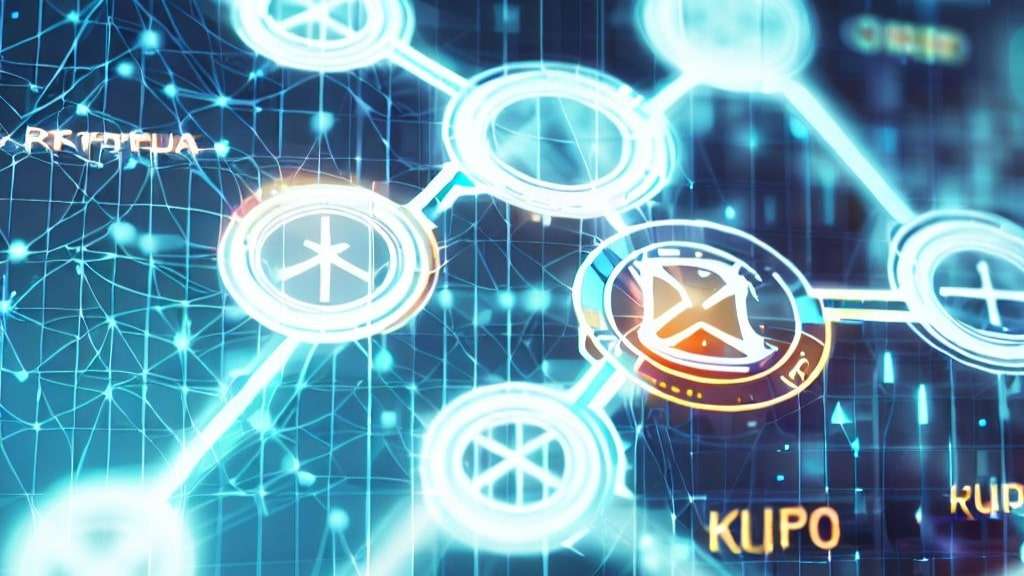
In a recent illuminating discussion, David Schwartz, the Chief Technology Officer of Ripple, delved into the fascinating inner workings of the XRP Ledger (XRPL), shedding light on the pivotal roles played by nodes and validators. If you’re curious about the decentralized world of cryptocurrencies and blockchain technology, read on as we break it down in simple terms.
The XRPL: Powering Digital Transformation
The XRP Ledger, or XRPL for short, is the beating heart of Ripple’s digital asset, XRP. It’s not your typical ledger; it’s a decentralized cryptographic ledger that operates through a vast network of peer-to-peer servers. This innovative technology was specifically designed to facilitate rapid, cost-effective cross-border payments.
What sets the XRPL apart from traditional financial systems is its efficiency and scalability. Unlike conventional systems that rely on centralized authorities, the XRPL utilizes a consensus algorithm to validate transactions. This ensures that the network remains secure and operational without the need for a single, all-powerful entity calling the shots.
Open to All: A Permissionless Playground
One of the XRPL’s most intriguing aspects is its open-source and permissionless nature. This means that anyone can participate in the network without needing an invitation or approval. Whether you’re an individual, a business, or a developer, you have a seat at the table.
Moreover, the XRPL boasts a multitude of features beyond simple transactions. It offers a decentralized exchange, the ability to execute smart contracts, and even the power to issue new tokens. This versatility makes it a promising platform for a wide range of financial applications, far beyond the realm of XRP transfers.
The Node of Connection
David Schwartz made a critical point: to interact with the XRPL, you need a node. If you’re not running your own node, you’ll depend on someone else’s. This reliance on a third party introduces an element of trust into the equation.
The beauty of the XRPL is that all crucial information is publicly accessible. This includes the current state of the ledger, every transaction ever made, and the rules that govern these transactions. Schwartz emphasized that, assuming a node is functioning correctly, it automatically keeps tabs on these three vital elements.
The Role of Nodes and Validators
Contrary to some misconceptions, nodes within the XRPL don’t require external validators to ascertain the validity of transactions. Nodes come hardwired with the capability to recognize which transactions are valid and what actions those transactions will execute. Schwartz emphasized that all honest nodes naturally reach a consensus on these matters, adhering to the system’s predefined rules.
However, validators have an indispensable role, particularly when it comes to resolving the double spend problem. Imagine two equally valid but conflicting transactions are submitted to the network. Validators are the decision-makers here, determining which transaction gets the green light and which one gets the boot. Their primary mission is to maintain consensus among all honest nodes, especially in situations where conflicting transactions create confusion.
The Double Spend Conundrum
The double spend problem is a classic challenge in the world of digital currencies. It arises when someone tries to spend the same amount of cryptocurrency twice, essentially creating a digital counterfeit. This could potentially wreak havoc on a cryptocurrency network.
Validators in the XRPL are like the referees of the digital world. When faced with conflicting transactions, they step in to ensure that only one of them can be confirmed. This is vital to maintaining the integrity of the ledger and preventing fraud.
Schwartz’s words underline the critical importance of validators in keeping the XRPL secure and reliable. They serve as the ultimate arbiters, settling disputes and making sure that only legitimate transactions make their way into the ledger.
A Helping Hand in Network Activation
Beyond resolving disputes, validators also play a crucial role in coordinating the activation of network features. However, it’s important to note that this is not a governance function. Validators don’t have the power to force nodes to adopt features they’re not willing to implement.
Instead, think of validators as facilitators. They help ensure that when new features or updates are rolled out, the transition is smooth and efficient. This contributes to the overall stability and functionality of the XRPL.
Transparency and Trust: Pillars of the XRPL
One of the core principles of the XRPL is transparency. Schwartz made it abundantly clear that all the key information about the XRPL is out there in the open. You can check the state of the ledger, scrutinize every transaction, and understand the rules that govern the entire system.
This transparency is what allows users to trust the XRPL. You don’t have to take anyone’s word for it; you can verify the integrity of the network yourself. This level of openness is a cornerstone of the XRPL’s design, ensuring that it remains a trustworthy platform for users worldwide.
The XRPL: Paving the Way for the Future
As the discussion with David Schwartz reveals, the XRP Ledger is not just a vehicle for digital transactions; it’s a blueprint for the future of finance. Its decentralized, open-source nature empowers individuals and businesses to participate in a new era of financial innovation.
With the XRPL’s robust infrastructure, including nodes and validators, users can trust in the security and reliability of the network. It’s a shining example of how blockchain technology is transforming the way we think about money, payments, and financial systems as a whole.
In a world where trust in traditional financial institutions is waning, the XRPL stands as a beacon of transparency and decentralization. Whether you’re sending XRP across borders or exploring the limitless possibilities of blockchain technology, the XRPL is a name to remember.
So, as you navigate the ever-evolving landscape of cryptocurrencies and blockchain, remember that the XRPL is not just a ledger; it’s a promise of a more inclusive, transparent, and secure financial future.


Get the latest Crypto & Blockchain News in your inbox.